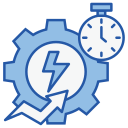
Adapting Agile Methodologies for Remote Teams
Chosen theme: Adapting Agile Methodologies for Remote Teams. Welcome to a practical, human-centered guide to making agility thrive when your team is spread across time zones, cultures, and kitchen tables. Explore ideas, try experiments, and share your experiences so we can learn together.
Remote Sprint Planning That Actually Works
Break refinement into bite-sized, asynchronous reviews using annotated tickets, short screen captures, and explicit acceptance criteria. Our Berlin–Austin team reduced meeting time by half simply by commenting ahead, reacting with emojis, and logging open questions so live time focused on tricky, high-ambiguity stories.
Remote Sprint Planning That Actually Works
Model capacity by mapping public holidays, core hours, and overlapping windows. We use a simple spreadsheet that visualizes coverage by day, which prevents optimistic commitments. Share your template if you have one, and we will feature community examples in a future post.




Communication Rituals That Build Trust at a Distance
Keep standups under fifteen minutes, anchored on a visible board. Ask what changed on the board since yesterday, not what everyone did. This tiny shift anchors conversation in outcomes, keeps updates honest, and gently nudges blockers into the light.
Communication Rituals That Build Trust at a Distance
Remote teams forget decisions faster because hallway reminders do not exist. Maintain a lightweight, searchable decision log with context, options, and consequences. When a new teammate joins, they ramp quickly and stop reopening settled debates. Share your favorite log format with us.
Remote-Friendly Scrum and Kanban Hybrids
WIP Limits Enforced by Automation
Set practical work-in-progress limits and let your tooling nudge the team when limits are exceeded. Alerts prompt conversations like Should we pause new work and swarm? This simple gate reduced context switching and cut cycle times by thirty percent on one distributed team.


Flow Metrics Beyond Velocity
Track cycle time, lead time, arrival rate, and aging work-in-progress. A remote team in healthcare realized long tail items aged silently after demo. Visualizing aging cards sparked a weekly swarm hour that unclogged hidden work and restored predictable delivery.
Integrations That Eliminate Copy-Paste
Connect issue tracking, code hosting, and chat so commits, pull requests, and deployments update stories automatically. This single source of truth prevents status theatre and helps product managers spot patterns quickly. A tidy stream of updates is better than three status meetings.
Definition of Done as Automated Checks
Turn your Definition of Done into pipelines: tests pass, security scan clean, docs updated, changelog written. When checks are green, done means done across time zones. During a holiday week, this saved a handoff from stalling because expectations were encoded, not implied.
Dashboards That Tell the Truth
Expose lead time, deployment frequency, and incident recovery across teams in a shared dashboard. Aim for timely signals over vanity metrics. When our dashboard surfaced stalled reviews, we introduced a rotating reviewer buddy system that unblocked merges without shaming anyone.
Human-Centered Remote Leadership in Agile

Replace screen-time assumptions with goal clarity and measurable outcomes. Publish quarterly intents and weekly signals so people self-manage their focus. A designer caring for a newborn shifted hours, hit outcomes beautifully, and felt trusted rather than surveilled. That trust fueled creativity.
Retrospectives People Look Forward To
Alternate formats like Start–Stop–Continue, Sailboat, and Lean Coffee. Announce the format ahead so people prepare. We once paired the Sailboat with a pre-retro survey, which sparked rich discussion and surfaced unseen anchors dragging delivery speed underwater.

Scaling Remote Agile Across Multiple Teams
Remote PI Planning That Energizes
Split planning into async pre-work, short alignment sessions, and team breakouts. Visualize objectives and risks on a shared board. During our first remote PI, we used timebox alarms and social breaks, which kept energy high and prevented Zoom fatigue from derailing focus.
Dependency Management Without Chaos
Map dependencies explicitly using colored links and due dates. Review them in a weekly cross-team sync that ends with a clear owner per risk. This small cadence reduced last-minute surprises and built trust between teams that had never met in person.
Shared Architecture and Autonomy
Publish lightweight architectural decision records and platform guardrails. Empower teams to ship independently within those boundaries. One marketplace team shaved deployment lead time from days to hours after decoupling their service, all while protecting cross-cutting reliability needs.
